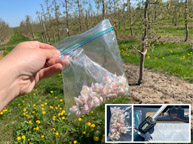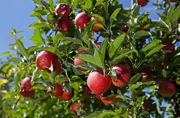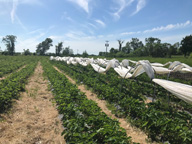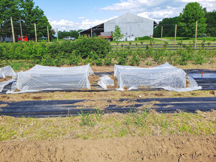
NNYADP Vegetable Research: Low Tunnels or Row Covers for Cucumber Beetle Management?
Willsboro, N.Y.; August 19, 2020. Based on the results of recent striped cucumber beetle management research, Cornell vegetable specialists recommend removing low tunnels once cucumber plants begin producing fruit, even when growing varieties that do not require pollination. The use of row covers for managing the challenging pest that attacks cucumbers, squashes, watermelon, pumpkins, and other crops is still under consideration. The farmer-driven Northern New York Agricultural Development Program funded this project in the Advancing Vegetable Production in NNY research series. Reports are posted at www.nnyagdev.org.
Striped cucumber beetles are particularly difficult to manage on certified organic farms, as allowable biopesticide sprays are not very effective in managing the pest. Therefore, growers are interested in other management options, such as netting.
In the research trial hosted by the Willsboro Research Farm in New York’s Essex County in 2019, more marketable cucumbers were harvested from plots without low tunnel protection even though more beetles were present on average in the uncovered plots.
Likewise, “we harvested twice as many marketable cucumbers in the uncovered plots as the row covered plots, and five times as many cucumbers in the untreated plots as the insect exclusion netting plots,” said project co-leader Elisabeth Hodgdon, a vegetable specialist with the Eastern New York Commercial Horticulture Program.
“The conditions under the low tunnels in 2019 seemed to cause stress to the cucumber plants, producing dense vines with few fruit,” Hodgdon explained. “The conditions under the two row covers in the trial – a lower cost spunbond row cover and a higher cost insect exclusion netting – included lower light levels, higher humidity, and higher temperatures on sunny days.”
The research team also recorded high numbers of male flowers on the cucumbers grown under the row covers, a sign of plant stress in varieties that do not require pollination to set fruit.
The beetle pressure was not high enough in 2019, with low populations until early August, to sufficiently compare the two row covers for protection from the pest.
Project co-leader and Cornell Vegetable Program specialist Judson Reid notes the value of the regional research to local consumers, stating, “fresh market vegetable production and consumer interest continue to increase across the northern part of New York State with new food hub and produce auction development, farmers markets, roadside stands, and food co-ops all selling locally-grown products. The Northern New York Agricultural Development Program support for vegetable research is underwriting better crop production understanding and marketing opportunities for traditionally-popular and new northern NY-adapted vegetable crops.”
The complete report on Advancing Vegetable Production in NNY in 2019, plus information on NNYADP-funded research on high tunnel and field-grown vegetable and berry production, is posted on the Northern New York Agricultural Development Program website at www.nnyagdev.org. Growers may also contact their local Cornell Cooperative Extension office for more information.
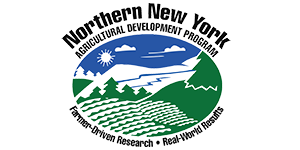
Funding for the Northern New York Agricultural Development Program is supported by the New York State Legislature and administered by the New York State Department of Agriculture and Markets.
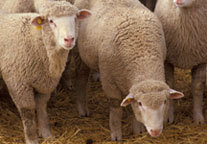
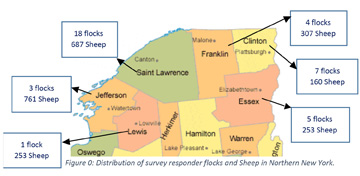 Three hundred and nineteen two-year-old or older ewes from 13 flocks across Jefferson, Lewis and St. Lawrence counties and from eight flocks across Clinton, Essex and Franklin counties were selected for health surveillance sampling and Johne’s disease testing.
Three hundred and nineteen two-year-old or older ewes from 13 flocks across Jefferson, Lewis and St. Lawrence counties and from eight flocks across Clinton, Essex and Franklin counties were selected for health surveillance sampling and Johne’s disease testing.